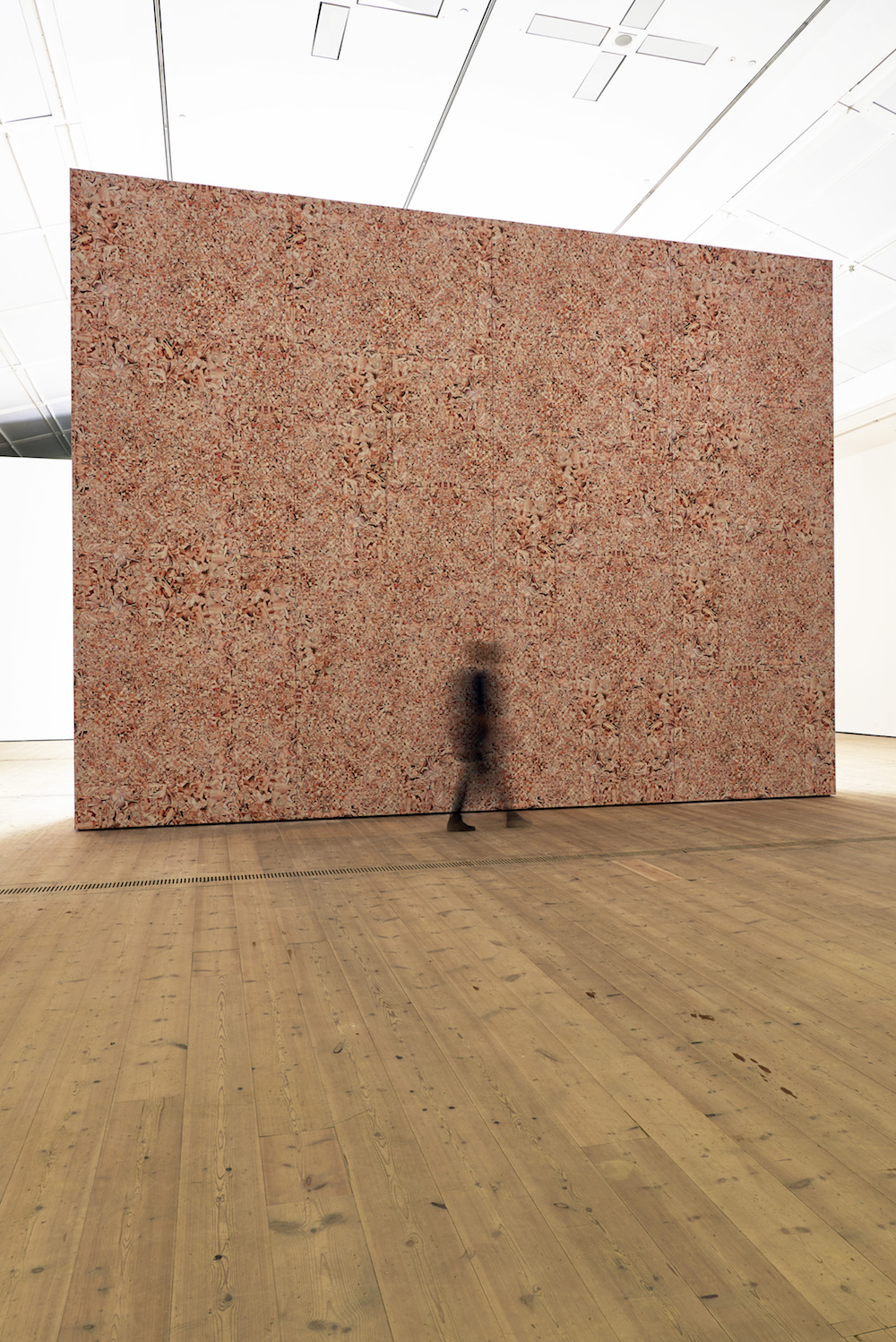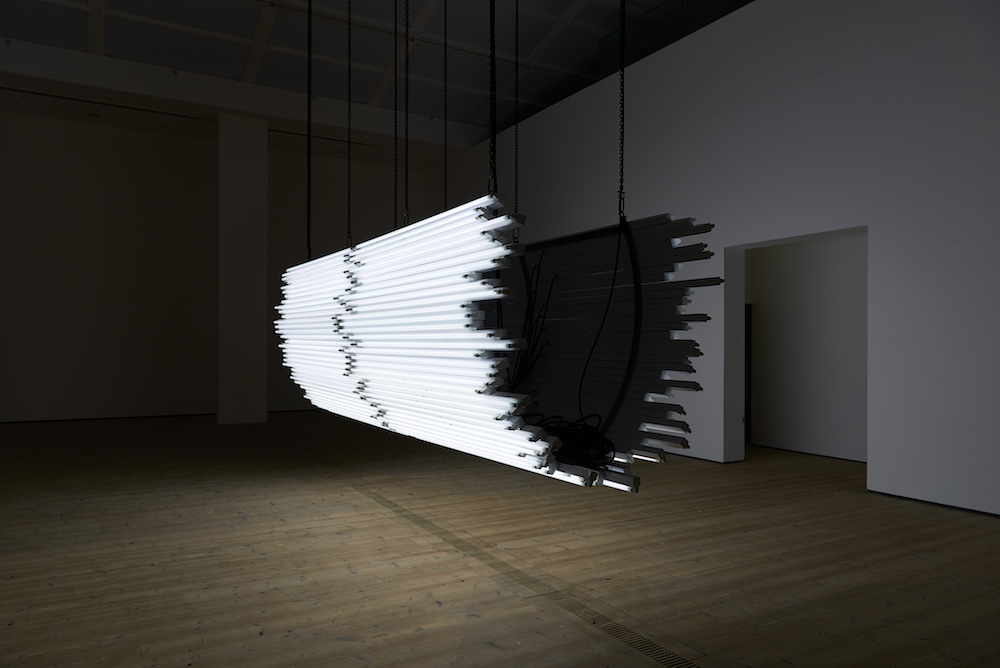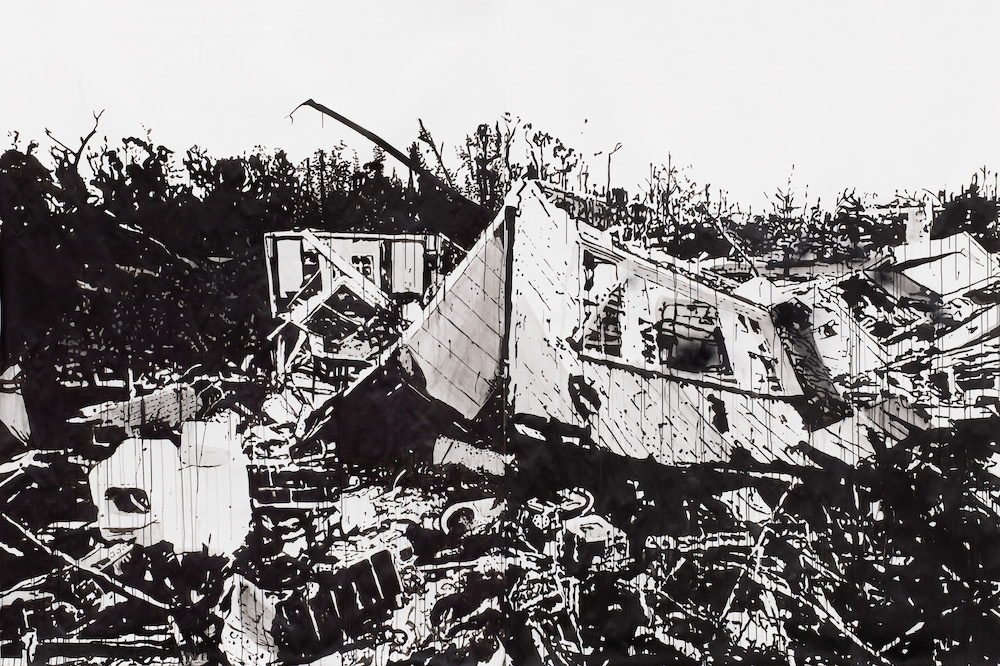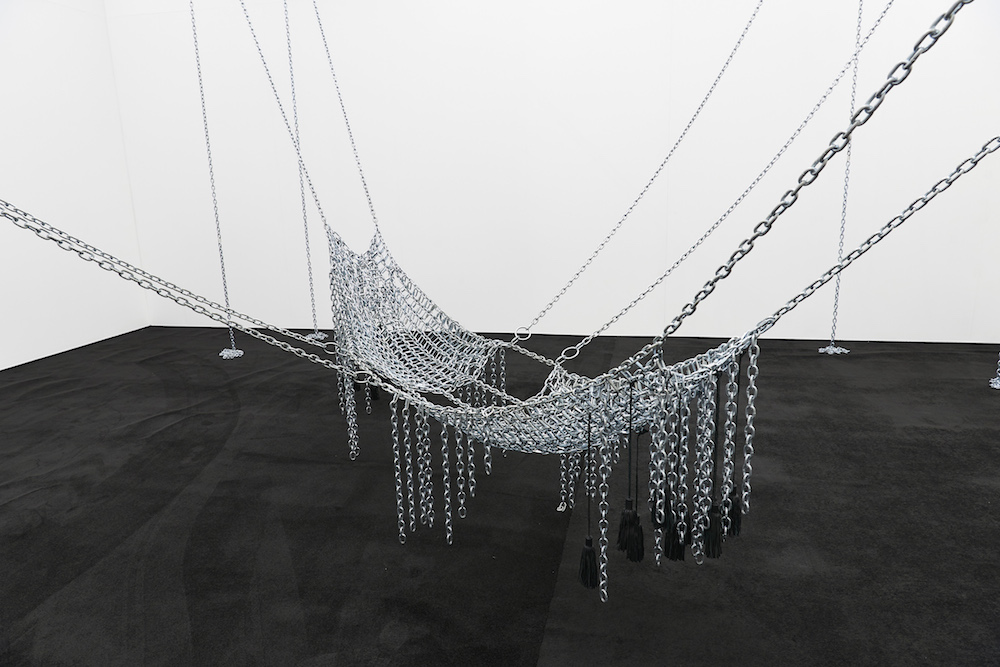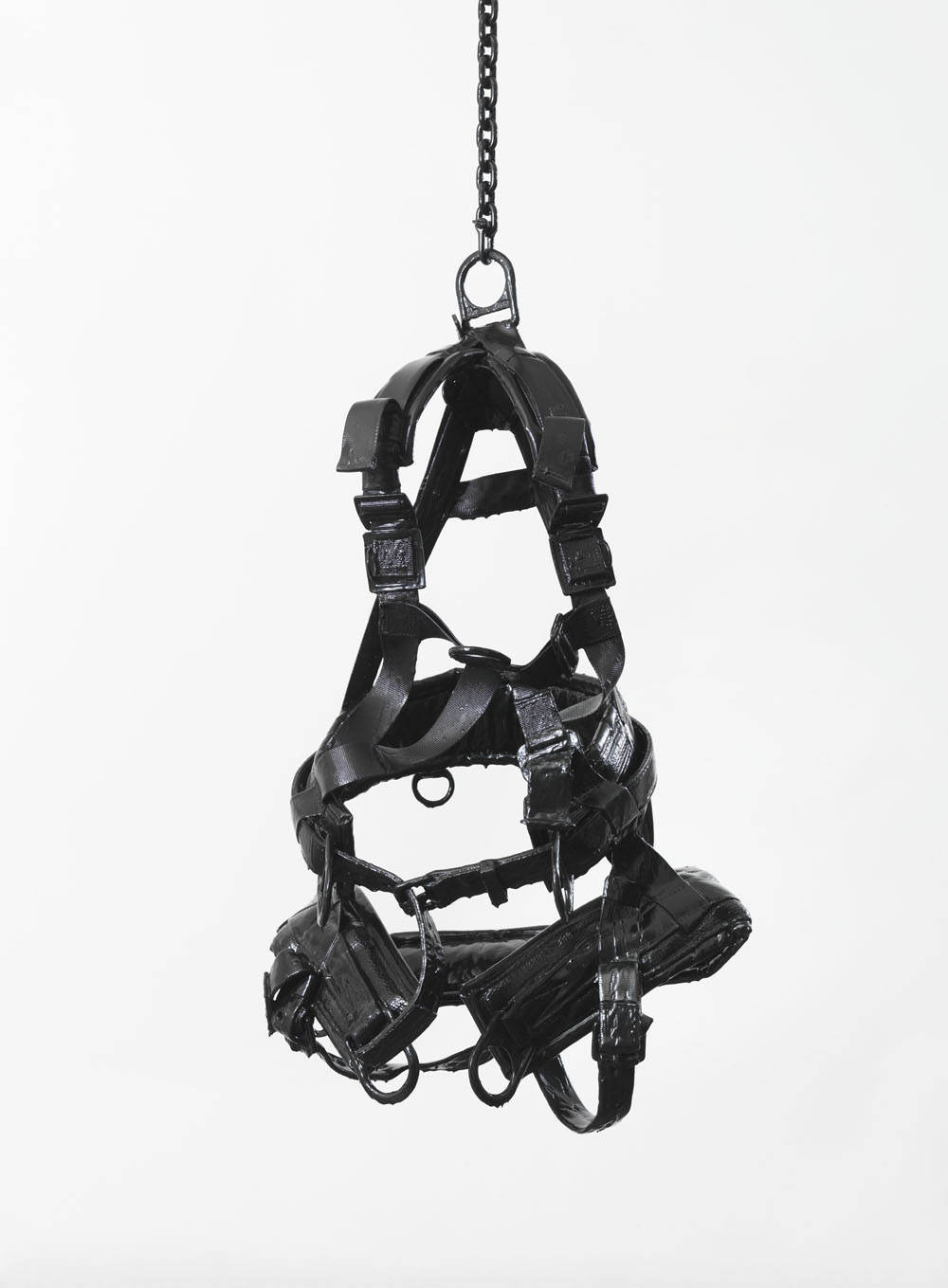Monica Bonvicini was born in the 60s in Venice and finished her studies at California Insitute of Arts and in Berlin in 1992. Her work since–dipping between installation, sculpture, video and drawing–has been influenced by architecture, exploring both public and private spaces, and is often noted to have sprung from the sex clubs that the artist found herself frequenting during the 90s.
She is currently showing at Gateshead’s BALTIC, bringing together work from a twenty-year period with new pieces.
BALTIC’s her hand around the room is a survey show which includes work from twenty years of your career. Do you feel there are new threads coming out of the work in seeing it all together that you perhaps haven’t considered previously? And have you created new works with a different angle specifically for the show?
It is always a strange feeling to show works which originated 20 or even more years ago. It makes you feel kind of old, though I do remember old works very much in their making as it was yesterday. For this show, I designed a totally new exhibition space within the exhibition space of floor 3. An architecture of around 700 sqm. I felt it was necessary for me to show those works (from the end of the 90s until 2016, which I have never shown together before) within a space that was designed in order to show a complex of thoughts, forms and materialities.
The architecture design is a combination of different rooms, corridors, windows and dead ends. It is built using the standard wall system of the BALTIC, with extra drywalls and the usual aluminium stubs. The outside is kept unfinished while the inside, the viewers’ access via a corridor almost central to the entrance to the space, is painted white and black. Some rooms have a black carpet on the floor. In order to walk to the end of Floor 3, you have to walk through this space.
This is something I have done in the past, a few examples are the large size installation Never Again at the Hamburger Bahnhof in Berlin, an installation you had to walk through in order to see the rest of the exhibition, or A Violent, Tropical, Cyclonic Piece of Art Having Wind Speeds of or in Excess of 75 mph in which you had to pass the work which was literally producing as much wind as a hurricane in order to continue with the show. I also have already occupied spaces changing their function starting with the sculpture in my Cal Arts Studio titled The Space, which consisted of a large drywall cube firmly delineating the working space within the studio while at the same time making it impossible to be used as working space. Or installing the very large light work NOT FOR YOU in the only museum-alike exhibition space at the Bonniers Konsthall in Stockholm.
In this space, there are around 20 bodies of works from the late-90s until now. I was first thinking of a space resembling a labyrinth, mostly because of the work Knotted that was hanging from the ceiling in the studio. It is a small one which I did before reading Knots by R.D. Laing, but since then I can’t stop thinking about the spaces that I imagine when thinking about the book and his works. But more than a labyrinth, I started thinking about darkrooms where the point is really not the one of finding a way out but to get lost and like it. I worked on the design with the architect Etienne Descloux who, I found out liked to draw imaginary darkrooms based on city plans.
The space at BALTIC had to be simplified because of the enormous daily number of visitors, but in its skeleton, it still gives the audience a range of possibilities to move around and see the works. It gave me the chance to redefine, again, what a show is, what it means to do one, to present something, to produce meanings and memories behind the sculptures.
Beside the exhibition space, the other new major work is Weave This Way, which is a large print of an infinite number of body parts cuts out. I never did any work using bodies before, it is normally their absence which I work with. This new work reminds me of The Body Is Beautiful by Martha Rosler, or of the last painting by Tintoretto, The Paradise, which is not his best work, but there’s the craziness bodies flying around, creating a sort of crazy cloud or again a knot.
Your aesthetic has been influenced by sex clubs over the years, as well as wider sexuality explored throughout literature, music and by your fellow artists, specifically from a female viewpoint. How do you feel the conversation around sexuality has changed, for better or worse, since you began making work?
I have been around, places, clubs. I was more a night than a day person and I had friends I went partying with. Very different friends, so a multitude of places to go to. I was in some clubs where maybe a young lady would not have been comfortable being in, maybe not even let in, but most places were just clubs. In Berlin I was almost at the now legendary Mislinjska every night, later I worked at the other by now legendary bar Panasonic. I was out and about.
For years I did work using an aesthetic which was kind of recognizable, sometimes consciously so, as S&M. But my main goal was not really to talk about sexual praxis but about art as fetishism, about a visuality which is extremely functional but also very aware of the design.
The attitude toward sexuality has, of course, changed in the last 20 years. I am not an expert in the field, but in general, I like to think that things change for the better, there is surely more equality now in the western society than 50 years ago.
Since bringing all your work together in this way, have new ideas been sparked?
It is hard to say where and when ideas are sparked…
‘Her hand around the room’ is showing at BALTIC, Gateshead until 26 February 2017
